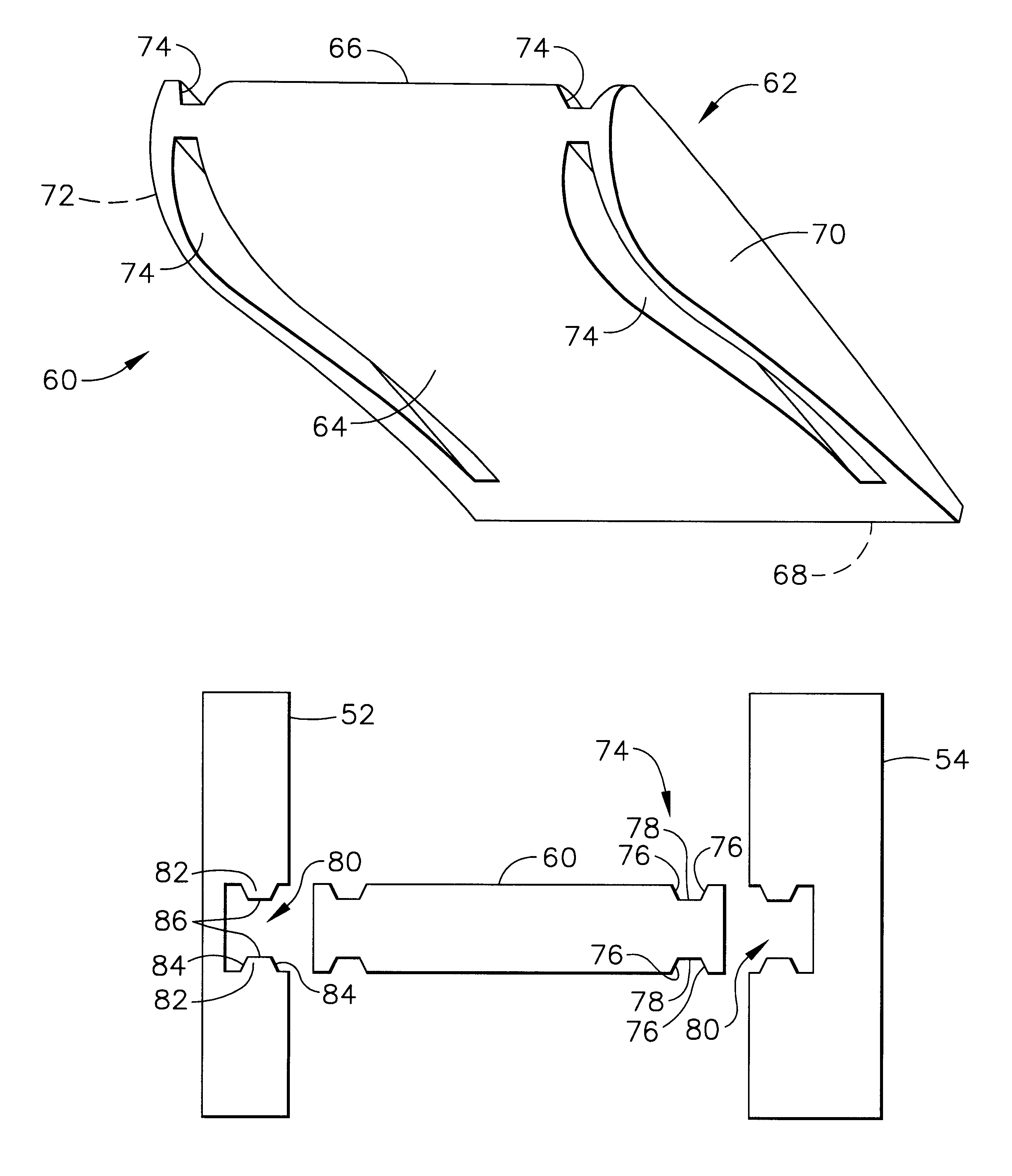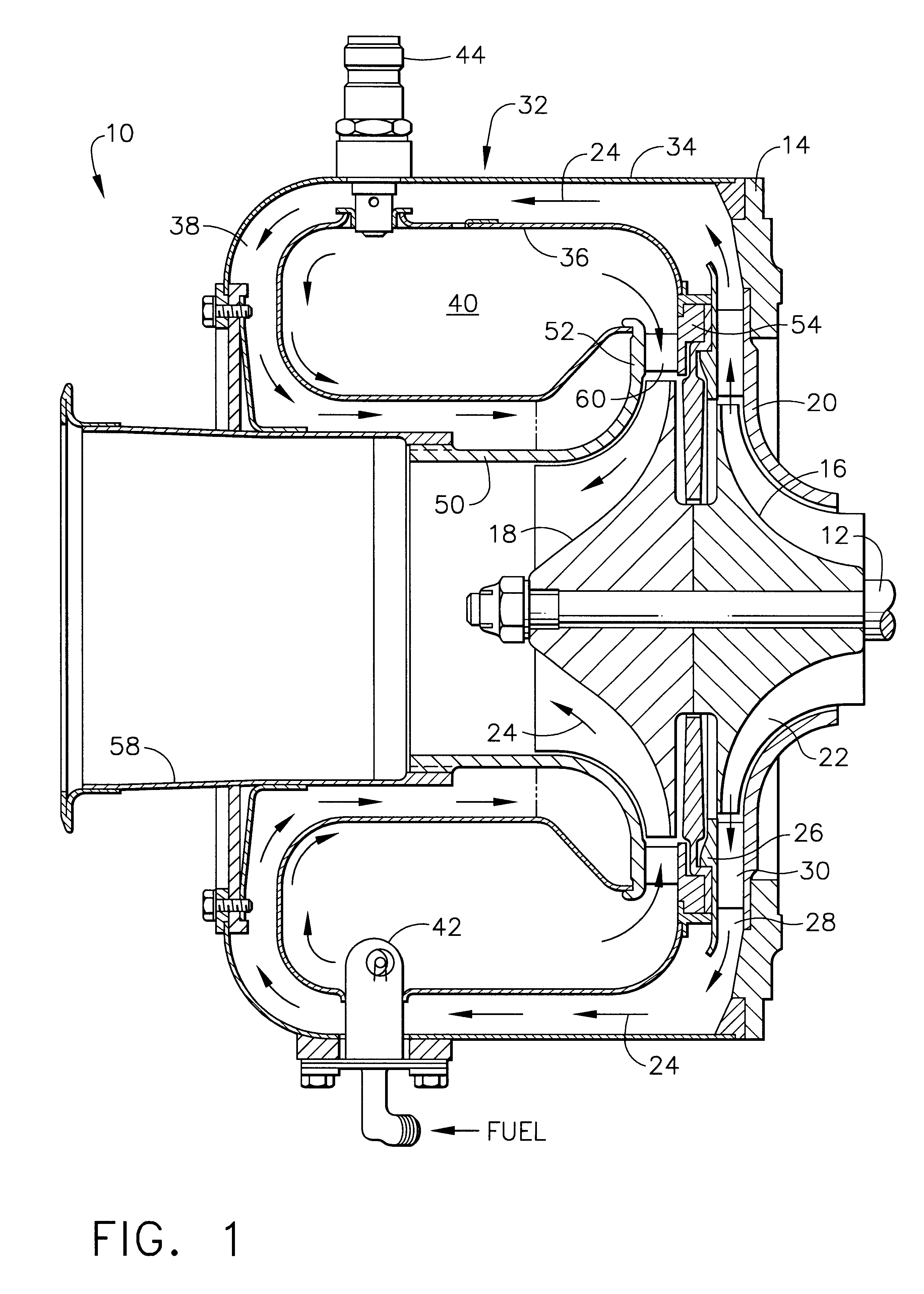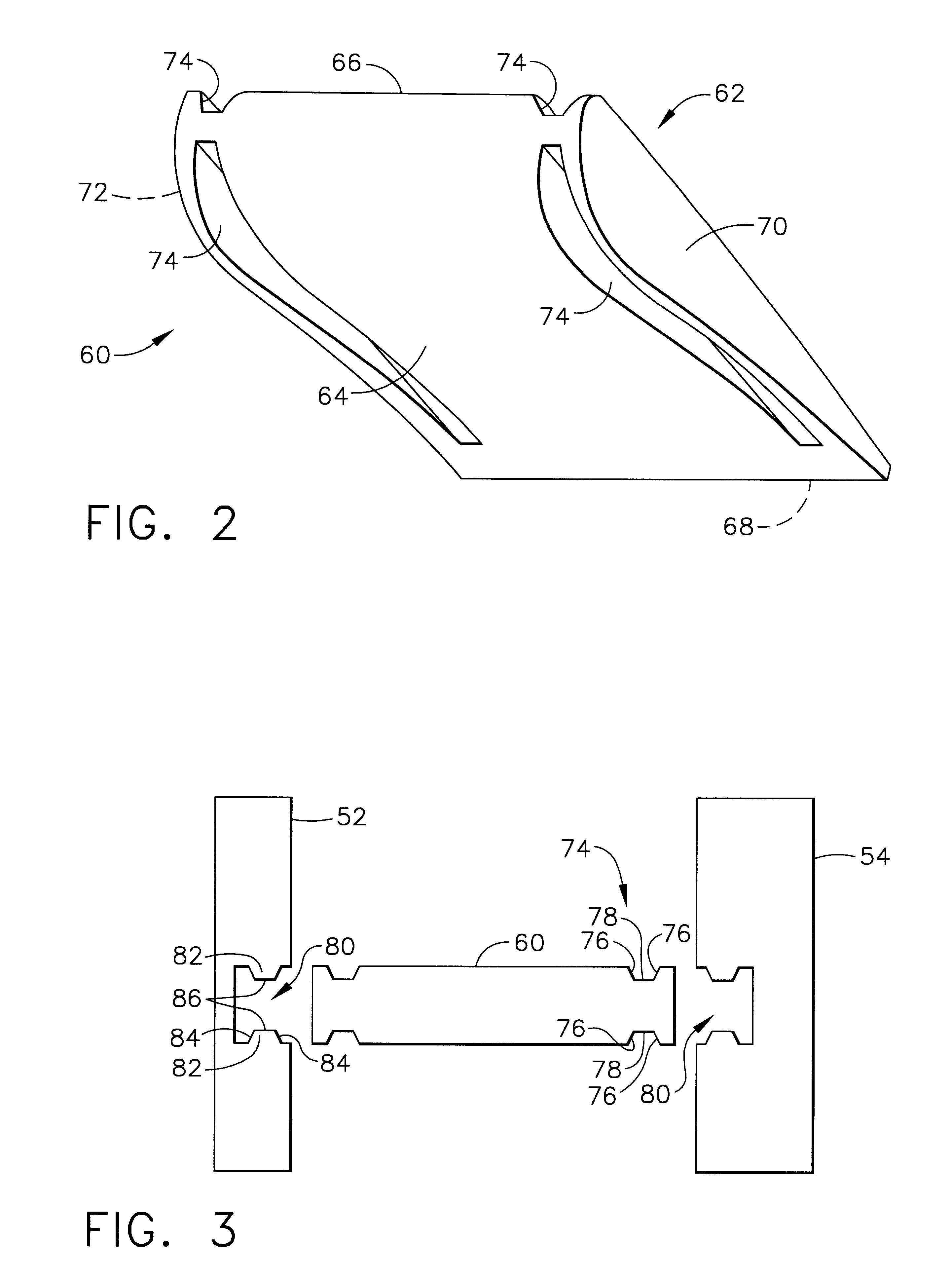Low stress connection methodology for thermally incompatible materials
a technology of thermally incompatible materials and low stress, which is applied in the direction of machines/engines, stators, liquid fuel engines, etc., can solve the problems of failure of parts during the operation, the need to accommodate the large thermal growth, and the limited temperature of materials, so as to achieve better adaptation to thermal growth mismatch
- Summary
- Abstract
- Description
- Claims
- Application Information
AI Technical Summary
Benefits of technology
Problems solved by technology
Method used
Image
Examples
Embodiment Construction
Referring to the drawings, FIG. 1 shows a gas turbine engine generally denoted by reference numeral 10. The engine type selected for illustrating the invention is an engine having a centrifugal compressor and a radial turbine. It should be appreciated that the invention is equally applicable to other type of engines such as those having axial compressors and axial turbines. The engine 10 has a rotor assembly including a shaft 12 journaled for rotation inside a casing 14. Mounted to the shaft is a compressor rotor 16 and a turbine wheel 18. The casing 14 includes a compressor housing portion 20 circumscribing an impeller 22 which is disposed within a flow path represented by the arrows 24. Axially spaced apart from the housing portion 20 is an annular wall 26 that together define a diffuser passageway 28. Disposed across the diffuser passageway 28 are a plurality of circumferentially disposed diffuser vanes 30.
From the diffuser vanes 30 compressed air flows into a reverse flow annula...
PUM
| Property | Measurement | Unit |
|---|---|---|
| Shape | aaaaa | aaaaa |
| Stress optical coefficient | aaaaa | aaaaa |
Abstract
Description
Claims
Application Information
 Login to View More
Login to View More - R&D
- Intellectual Property
- Life Sciences
- Materials
- Tech Scout
- Unparalleled Data Quality
- Higher Quality Content
- 60% Fewer Hallucinations
Browse by: Latest US Patents, China's latest patents, Technical Efficacy Thesaurus, Application Domain, Technology Topic, Popular Technical Reports.
© 2025 PatSnap. All rights reserved.Legal|Privacy policy|Modern Slavery Act Transparency Statement|Sitemap|About US| Contact US: help@patsnap.com



